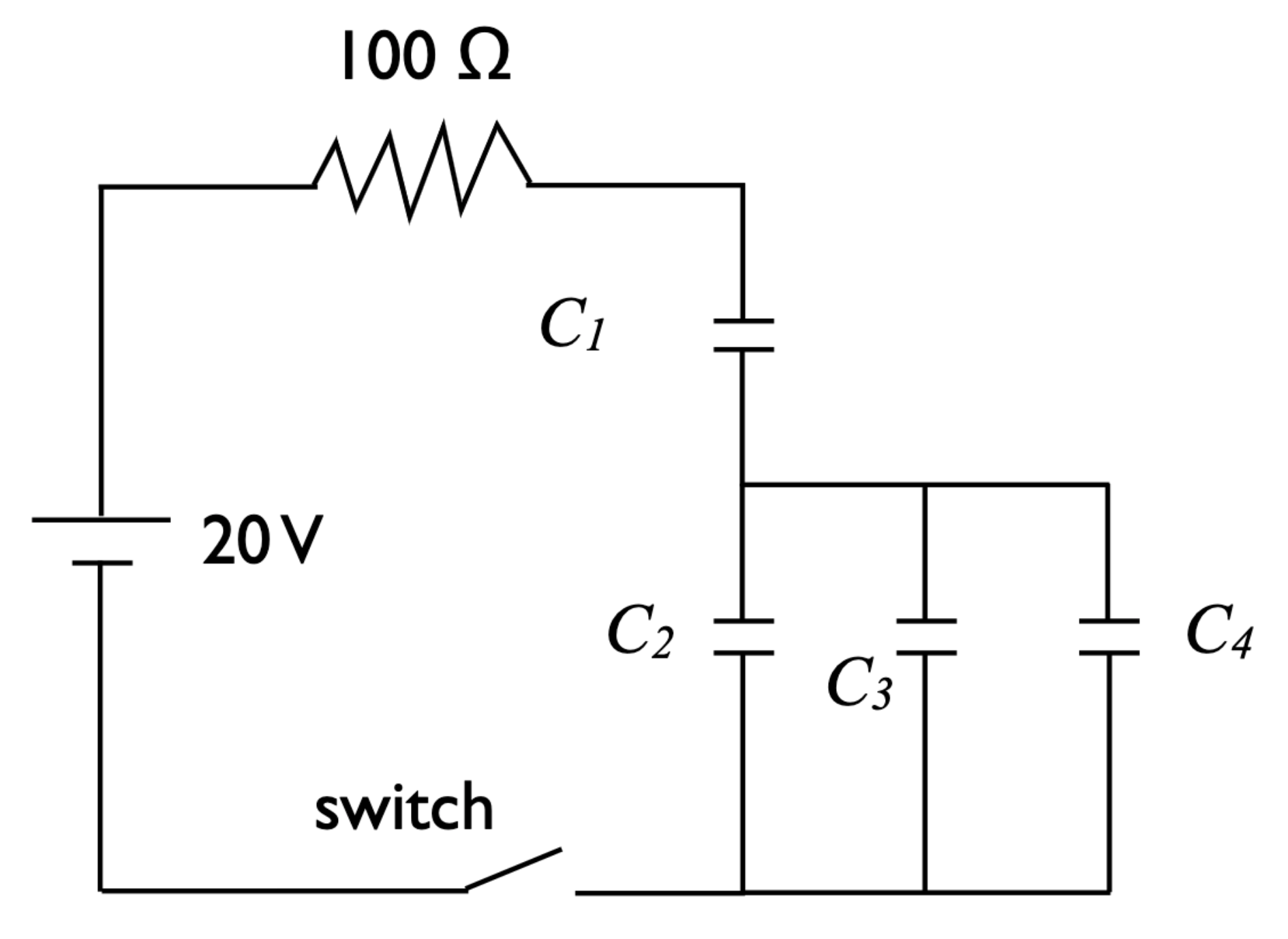RC Circuit Reduction#
Consider the RC circuit shown below. Here, \(C_1 = {{ params.c1 }}\) \(\rm{\mu F}\), \(C_2 = {{ params.c2 }}\) \(\rm{\mu F}\), \(C_3 = {{ params.c3 }}\) \(\rm{\mu F}\), and \(C_4 = {{ params.c4 }}\) \(\rm{\mu F}\).
In this problem we will find the equivalent capacitance of this capacitor system in two steps. We will then use this result to determine the carge stored in the capacitor system.

Part 1#
Select the capacitors that are in parallel with eachother.
Answer Section#
\(C_1\)
\(C_2\)
\(C_3\)
\(C_4\)
Part 2#
Redraw the circuit by replacing the capacitors that you identified in Part 1 by an equivalent capacitor with capacitance \(C_5\). Determine value of \(C_5\).
Round your answer to three significant figures.
Answer Section#
Please enter an answer in \(\rm{\mu F}\).
Part 3#
For your redrawn circuit, select the capacitors that are in series with each other. Do not select any capacitors that you have replaced.
Answer Section#
\(C_1\)
\(C_2\)
\(C_3\)
\(C_4\)
\(C_5\)
Part 4#
Redraw the circuit by replacing the capacitors that you identified in Part 3 by an equivalent capacitor with capacitance \(C_6\). Determine the value of \(C_6\).
Round your answer to three significant figures.
Answer Section#
Please enter an answer in \(\rm{\mu F}\).
Part 5#
Find the time constant \(\tau\) for this circuit.
Round your answer to three significant figures.
Answer Section#
Please enter an answer in \(\rm{s}\).
Part 6#
Find the maximum charge \(Q\) that can be stored in this capacitor system.
Answer Section#
Please enter an answer in \(\rm{C}\).
Attribution#
Problem is licensed under the CC-BY-NC-SA 4.0 license.

